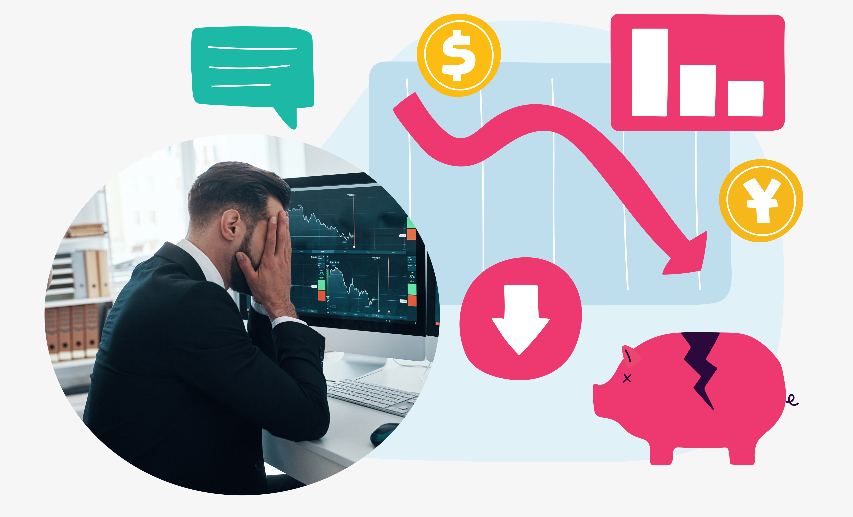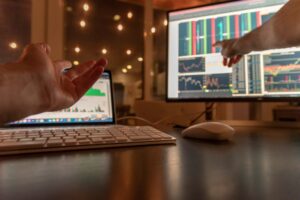Share this article:
In Order To Succeed In Trading, You Need To Be Dynamic & Know When To Make Adjustments
With the market constantly changing, it is important to be able to adapt your trading psychology in order to succeed. Trading success is accomplished through a combination of skill and discipline that will lead you to the best possible outcomes. In this article I am going to cover three keys for optimal trading psychology.

Optimizing your trading psychology doesn't need to be difficult. There are many great tools that exist that will help you to transform your trading in ways that you would have to see to believe.
Self awareness - Recognize when emotions like fear or greed start influencing your decisions
It usually isn't a mystery. There is a strong feeling that arrives in your gut or a thought that pops into your mind pulling you to take a trade that the rational side is telling you not to take. But, no matter how much it makes sense, that deeper part of you is calling you to take the non-optimal trade.
You need to recognize this emotion and work through it. Your trading psychology will thank you for this decision in the long run, because these emotional responses have been shown to lead traders towards bad outcomes more often than not.
The key is self-talk. Self talk can happen before or during trades so that your brain has a chance of aligning with what needs to be accomplished on a given trade...It could sound like "I am going into this trade confident I know how difficult entry points are right now." Or at other times it might go like "I'm feeling really good about my ability to read charts today," which would imply that there was an initial level of confidence but then something changed, leading you down the thought pattern that is allowing fear or greed to take over.
If you are having trouble keeping your fear/greed in check, you may want to try some mental exercises.
Mental exercises - Create mental models that keep biases in check
When done consistently, mental exercises are some of the most powerful things that you can do to control fear/greed when trading. For example, they can help you to easily enter into the peak performance state every time you sit down to trade. Also, they can help you to develop the patience that you need to wait for your A+ setups instead of forcing action because you are bored or because other emotions are getting in the way.
Mindful breathing:
Have you ever heard of the Wim Hof method? It is a breathing exercise that is used to increase your body's resistance towards stress. Mindful breathing can result in increased circulation, reduced blood pressure levels, strengthened immune system and slowed heart rate ̶ all just by following this practice for 20 minutes every day!
What does this mean for your trading? Put simply, it means that you will feel more relaxed during your trading sessions. Trading naturally has ups and downs but with this simple breathing technique you will find that fear and anxiety will decrease greatly leading to less mistakes in execution.
Tapping:
Tapping is a mental exercise that you probably may not have heard of before. It is what we use at Tradechology to help our traders maximize their potential. Tapping using a combination of kinesthetic tapping on the desk along with behavior change audios to transform the way you approach trading. To write about it doesn't give it justice. It is something that you must experience to see the benefits. If you are interested, here is a link to try it out on your own.
Trade With An Appropriate Stop Loss
Setting a stop loss for every trade that you enter is one of the best habits that you can acquire as a trader. This allows for a 'maximum' amount that you are willing to lose on any given trade. It may take some adjusting to get your stop loss to a comfortable level based on your risk tolerance but it should be far enough from your entry to let the trade breathe but not too far away that your emotions start to take over when your trade starts gong against you.
If you are looking to optimize your trading and thinking, the three keys I have outlined in this article should be a great start. Whether it’s self-awareness or mental exercises like creating models that keep biases at bay, there is something for everyone here. Stop loss is also an important concept to understand as it helps prevent overtrading and gives yourself room for error when trading on margin. For more information about these concepts join our upcoming masterclass event!

Sign Up and Subscribe for quick updates!
Enter your name and email below to get notified of when the next blog post is released. It’s that easy.
Share this article:

PRODUCT
RESOURCES
We are not Financial Advisors or a Broker/Dealer: Neither Tradechology nor any of its officers, employees, representatives, agents, or independent contractors are, in such capacities, licensed financial advisors, registered investment advisers, or registered broker-dealers. MLH Capital does not provide investment or financial advice or make investment recommendations, nor is it in the business of transacting trades, nor does it direct client commodity accounts or give commodity trading advice tailored to any particular client’s situation. Nothing contained in this communication constitutes a solicitation, recommendation, promotion, endorsement, or offer by MLH Capital of any particular security, transaction, or investment.
Securities Used as Examples: The securities used in this example are used for illustrative purposes only. The calculation used to determine the return on investment “ROI” does not include the number of trades, commissions, or any other factors used to determine ROI. The ROI calculation measures the profitability of investment and, as such, there are alternate methods to calculate/express it. All information provided are for educational purposes only and does not imply, express, or guarantee future returns. Past performance shown in examples may not be indicative of future performance. Testimonials appearing on this website may not be representative of other clients or customers and is not a guarantee of future performance or success.
Investing Risk: Trading securities can involve high risk and the loss of any funds invested. Investment information provided may not be appropriate for all investors and is provided without respect to individual investor financial sophistication, financial situation, investing time horizon, or risk tolerance.
Testimonials appearing on this website may not be representative of other clients or customers and is not a guarantee of future performance or success



